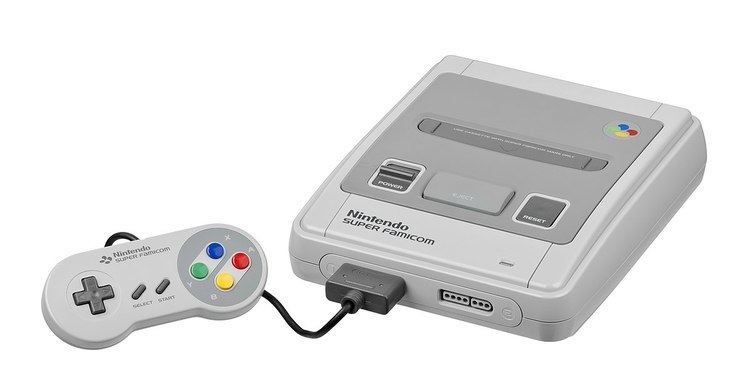 | ||
The Super Famicom Box is a video game system created by Nintendo that incorporated a "pay to play" mechanism in a manner similar to arcade machines. It was sold only in Japan in the early 1990s and was only available for installation in hotel rooms. The device consisted of Super Famicom console hardware enclosed in a box along with a coin acceptor for time-limited playing of video games. The device included original Super Famicom controllers.
Contents
Description
The Super Famicom Box works on the same principle as the Neo-Geo Deck and combines Super Famicom console hardware with a coin acceptor. The system connects to a TV and has two conventional Super Famicom controllers for gameplay. A user can obtain five minutes of gameplay by inserting a 100-yen coin. One peculiarity of the Super Famicom Box (compared to its console counterpart) is its use of system-specific multicarts that contain two or three games per cartridge, unlike the use of conventional cartridges such as with the Nintendo M82 system. These cartridges are much larger than conventional Super Famicom cartridges. The system can accept up to two of these cartridges at the same time. A hinged cover on the front of the Super Famicom Box allows the installation and removal of cartridges. The front cover is secured when closed by a keyed lock at each end. Another keyed lock allows the system to be turned on and off. A special onscreen menu allows the user to select and launch a game. The system incorporates additional hardware not found in the home console to manage the game selection screen and the onscreen messages that direct the user to insert money. The Super Famicom Box cartridge that contains Super Mario Kart, Star Fox and the Super Mario Collection is required to operate the system as it also contains the system BIOS. The games from the Super Famicom Box multicarts are identical to traditional Super Famicom games.
A second revision of the system, the Super Famicom Box 2, used standard Super Famicom cartridges and had a set of multiple internal cartridge slots of the same setup as the Neo-Geo MVS with similarities to the design used by Nintendo on the Nintendo M82. It can accept up to ten standard Super Famicom cartridges.
